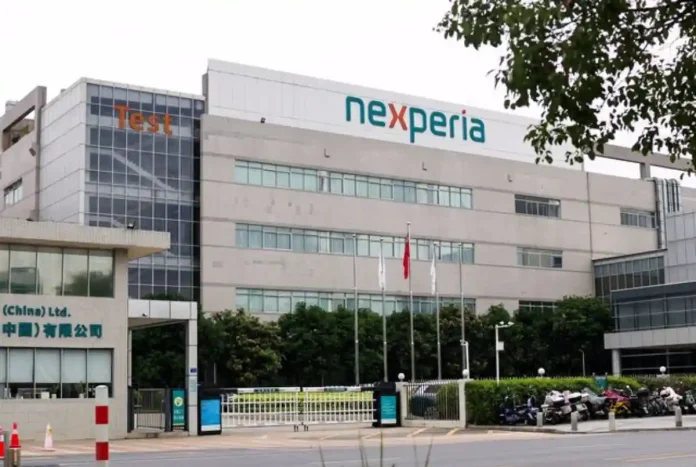The Nexperia chip crisis has shaken the global automotive industry, exposing once more how fragile and heavily dependent the world’s auto supply chains truly are. A modest factory in Dongguan, China—situated beside a weed-filled empty lot—has unexpectedly become a global choke point for essential automotive chips. This sudden disruption has revived memories of the COVID-19 semiconductor shortages that crippled automakers just a few years ago.
After the pandemic and the 2021 Japanese factory fire, automakers vowed to diversify and strengthen their semiconductor sources. But experts now say the industry failed to account for one major risk—geopolitical tensions affecting low-tech chip components, which are just as critical to car production.
China’s Influence and the Rising Supply Chain Vulnerability
China’s dominance in global manufacturing extends far beyond high-tech chips. Even low-cost components—worth just fractions of a penny—have now become tools of economic leverage. This became clear after the Dutch government took temporary control of Nexperia, fearing its technology might flow to its Chinese parent company, Wingtech. In response, Beijing halted exports of finished Nexperia chips produced at the Dongguan facility.
Although the Netherlands has since reversed the takeover decision, the crisis has already exposed how dependent global production is on Chinese-controlled semiconductor operations.
Ambrose Conroy, CEO of Seraph Consulting, summarized the problem:
“No one prepared for geopolitical disruption, and they’re still not prepared.”
How the Chip Shortage Hit Major Automakers
The automotive chip shortage impacted a wide range of car manufacturers and suppliers:
- Nissan and Honda were forced to cut production.
- Bosch—which buys around €200 million worth of chips from Nexperia annually—had to reduce factory working hours.
- Several European and Asian suppliers narrowly avoided halting operations entirely.
These chips may be small and inexpensive, but they power essential vehicle functions such as brake systems, power modules, and electric window controls.
Why Automakers Were Caught Off Guard Again
Despite previous disruptions, many automakers still relied heavily on just-in-time inventory systems, leaving little room for unexpected delays. Interviews with auto executives and supply-chain specialists reveal that:
- Many carmakers assumed low-tech chips would always be readily available.
- Alternative supply sources were not developed in time.
- China’s manufacturing grip over mid- and low-end components was underestimated.
According to international relations professor Li Xing, the crisis proved one thing clearly:
Even for basic components, global manufacturers still depend heavily on China.
Currency Shifts and Operational Roadblocks
When Nexperia later resumed limited domestic sales, it required payments in Chinese yuan, shifting away from the previous foreign-currency system. This resulted in ready-to-ship chips piling up at the Dongguan plant, as some companies struggled to adjust to the new payment requirements.
China eased restrictions following a meeting between U.S. President Donald Trump and President Xi Jinping, allowing limited exports to resume—just in time for Bosch, Hella, Aumovio, and ZF Group, who were on the brink of halting operations.
Some companies, like Austria’s Melecs and Apple supplier JABIL, successfully navigated the crisis by using Chinese entities that could transact in yuan.
Automakers Still Lacking Long-Term Resilience
Experts say the industry has not fully learned from past disruptions. Autos analyst Julie Boote noted that carmakers should ideally maintain several months’ worth of chip inventory, but many continue depending on thin supply chains.
Nissan’s Chief Performance Officer Guillaume Cartier acknowledged the challenge:
“Do you believe you can change your entire supply chain in three years?”
While Nissan had to reduce production of its popular Rogue SUV, Toyota avoided major disruptions because it follows a strict policy of stockpiling months of chip inventory.
Replacing Nexperia Chips Isn’t Easy
Beyond geopolitical risks, the crisis highlighted a technical constraint: Nexperia chips are often soldered directly into vehicle components. Replacing them requires extensive testing and certification, which can take months—or even more than a year.
This makes quick substitutions nearly impossible during supply-chain emergencies.
The Rising Cost of Building a Resilient Supply Chain
Supply-chain experts say the auto industry must now rethink its long-term strategy. Building resilience—through diversification, added inventory, and reduced dependence on China—will be expensive and time-consuming.
As Ankura Consulting’s Montufar-Helu puts it:
“Everyone talks about resilience and diversification—until they see the cost.”
The Nexperia chip crisis ultimately serves as a powerful reminder: even low-cost components can bring global production to a halt when geopolitical tensions rise.
Also Read: Halo-Themed ICE Ad Sparks Outrage Among Developers and Fans

